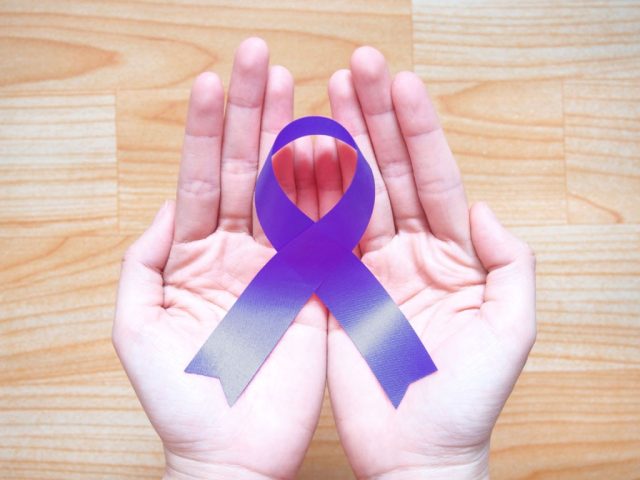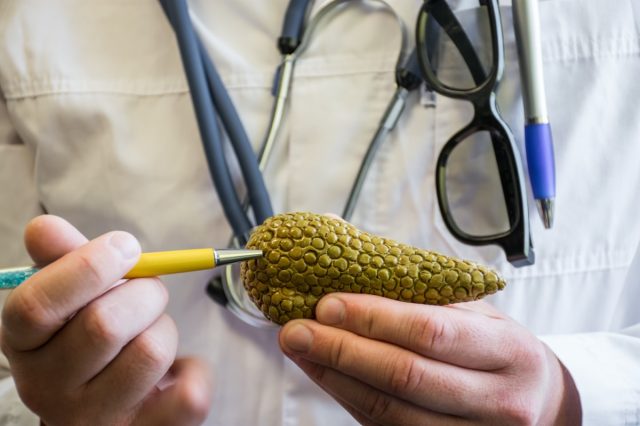Pancreatic Cancer Claimed Robbie Knievel—Here are the Key Symptoms’ Robbie Knievel, the son of famed stuntman, Evel Kneival, died at his Nevada home at the age of 60 earlier this month from pancreatic cancer after being in hospice for three days. “It was expected,” his brother Kelly Knievel told CBS News. “He was in Reno with his three daughters by his side.”
“Kaptain Robbie Knievel,” followed his father into the adventures, yet the dangerous high-flying world of unforgettable motorcycle stunts, which included jumping 150 feet over the fountains at Caesars Palace in Las Vegas as a tribute to his dad. According to his official website, Knievel performed 350 jumps and achieved 20 world records. “Daredevils don’t live easy lives,” his brother told CBS News. “But, it’s what they do.” He added, “He was a great daredevil. If you look at his jumps, that’s what he should be known for. It’s what he loved doing.”
Pancreatic Cancer Claimed Robbie Knievel—Here are the Key Symptoms
An estimated 64,000 people will be diagnosed with pancreatic cancer (33,130 men and 30,920 women) this year and about 50,550 people (26,620 men and 23,930 women) will die from the disease, the American Cancer Society says. Pancreatic cancer is typically difficult to diagnose because there are often no symptoms until later stages, but there can be warning signs to be aware of. Eat This, Not That! Health spoke with doctors, who did not treat Knievel, but explained what to know about pancreatic cancer.
READ ARTICLE: 5 Mindful Eating Habits To Enhance Your Meditation Practice

Dr. Ryan Fields, Siteman Cancer Center surgeon and chief of the section of surgical oncology at Washington University School of Medicine says, “Pancreatic cancer is an aggressive cancer that is increasing in incidence in the U.S. Even if caught early, it has a high risk of coming back (recurrence) after initial treatment. Current standard treatments include combinations of surgery, chemotherapy, and radiation, depending on the stage of disease at presentation. Current areas of research include improved early detection, better treatments (including targeted/genetic therapy and immunotherapy), and prevention.”
As Dr. Fields mentioned, researchers are focusing on finding more effective ways to treat patients and there’s now a new surgery option for some cases. The American Cancer Society says, “Surgery to remove pancreatic cancer (most often a Whipple procedure) is a long and complex operation that can be hard both for the surgeon and the patient. It often requires a long hospital stay, at least in part because of the long incision (cut) made in the belly. A newer approach now used at some major medical centers is to do the operation laparoscopically. For this approach, the surgeon makes several small incisions in the belly instead of one large one. Long, thin surgical tools and a tiny video camera are then inserted through these cuts to do the operation. One advantage of this surgery is that people often recover from it more quickly. But this is still a difficult operation. Surgeons are looking to see how it compares to the standard operation and which patients might be helped the most by it.”

Pancreatic Cancer Claimed Robbie Knievel—Here are the Key Symptoms- Shutterstock
Dr. Fields states, “There are several reasons. First, pancreatic cancer is often not detected until it has spread because it can grow in the pancreas before symptoms develop and a patient seeks medical attention. Second, unlike breast and colon cancer where tests like mammograms and colonoscopies catch early or precancerous lesions, there is no screening test for pancreatic cancer. Third, even when the tumors are caught early, they are still aggressive and can spread. Fourth, treatments for pancreas cancer once it has spread are not generally curative. Although treatment can be effective in slowing the growth of tumors, few patients with metastatic pancreatic cancer are cured.”
Dr. Tomi Mitchell, a Board-Certified Family Physician with Holistic Wellness Strategies explains, “This type of cancer is commonly undetected in its early stages. Also, at first the growth of these cancer cells is painless. This is the reason why the prognosis for pancreatic cancer is very poor. Almost 80% of the patients who are diagnosed with this type of cancer already have the disease in its advanced stages or it has already metastasized. The 1 to 5-year relative survival rate is very low with 25% and 5% respectively. Individually speaking, the survival rates of pancreatic cancer patients are varied. If the patient has been diagnosed in its terminal stage already, it only follows that he is left with very little time to live.
On the other hand, there are cases of the slow progression of the disease. This means that the patient, even if terminally ill, can live for about a couple of years
longer. According to John Hopkins, you can beat pancreatic cancer if caught early. However, the problem lies upon the late detection; making the prognosis of the disease a lot worse than it actually is.”
 READ: 23 Incredible Health Benefits Of Sugarcane Juice You Might Not Have Known
READ: 23 Incredible Health Benefits Of Sugarcane Juice You Might Not Have KnownAccording to Dr. Fields, “Smoking and obesity are two of the strongest risk factors for many cancers, including pancreatic cancer. Smoking contains carcinogens that increase your risk of cancer. The exact mechanisms between obesity and cancer are not completely clear yet, but likely relates to the higher inflammation and stress placed on the pancreas and other organs with obesity. This predisposes the development of cancer.”
Dr. Mitchell adds, “The risk of pancreatic cancer is linked to bad habits such as smoking and eating an unhealthy diet. Smoking can increase the likelihood of developing this deadly disease due to the presence of carcinogens. Eating unhealthy food can also play a role in exacerbating the risk, whether it be because of too much-saturated fat in red meat or excess carbohydrates from processed foods. In addition, excessive alcohol consumption may also be a factor in increasing the chances of developing pancreatic cancer. All of these elements make it clear that taking preventive measures, including quitting smoking and maintaining a healthy diet, can eliminate many unnecessary health risks and ensure a healthier lifestyle.”

The link between sugar-sweetened drinks and pancreatic cancer has been in question for quite some time because of “its insulin-stimulating connection.” a recent study states and their findings are shocking. Researchers followed “491,929 adults, consisting of 235,427 men and 256,502 women (mean age: 39.9, standard deviation: 13.2), from a health surveillance program and there were 523 pancreatic cancer deaths between 1994 and 2017.”
According to the study, “We found young people (age <40) had higher prevalence and frequency of sugar-sweetened beverages than the elderly. Those consuming 2 servings/day had a 50% increase in pancreatic cancer mortality (HR = 1.55, 95% CI: 1.08–2.24) for the total cohort, but a 3-fold increase (HR: 3.09, 95% CI: 1.44–6.62) for the young. The risk started at 1 serving every other day, with a dose–response relationship…We concluded that frequent drinking of sugar-sweetened beverages increased pancreatic cancer in adults, with highest risk among young people.”

Dr. Fields says, “If a tumor forms in the pancreas around where the bile duct connects with the intestine (called the “head” of the pancreas), the bile duct can become obstructed and patients may become jaundiced. There are no other specific signs of pancreatic cancer, but patients may develop vague abdominal symptoms or other systemic complaints (e.g. fatigue, decreased appetite) prior to a diagnosis of pancreatic cancer.”
The Mayo Clinic says, “Signs and symptoms of pancreatic cancer often don’t occur until the disease is advanced. They may include:
Abdominal pain that radiates to your back
Loss of appetite or unintended weight loss
Yellowing of your skin and the whites of your eyes (jaundice)
Light-coloured stools
Dark-coloured urine
Itchy skin
New diagnosis of diabetes or existing diabetes that’s becoming more difficult to control
Blood clots
Fatigue”
READ ALSO: Cervical Cancer: What You Need To Know About The Signs And Symptoms Of End-Stage Disease

